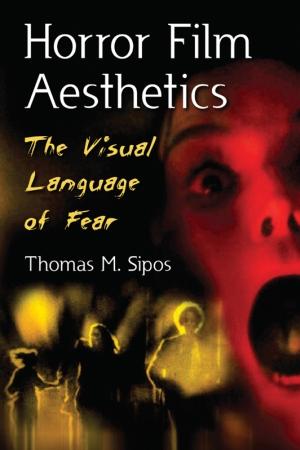 Thomas M. Sipos has worked as a script reader, actor or extra on more than 70 productions and has contributed to Filmfax, Midnight Marquee and other magazines. He is the author of a number of books, including Horror film Aesthetics: The Visual Language of Fear (McFarland, 2010) and maintains the blog of the same name. Thomas shares thoughts and responses to questions based upon this fine book in the following interview.
Thomas M. Sipos has worked as a script reader, actor or extra on more than 70 productions and has contributed to Filmfax, Midnight Marquee and other magazines. He is the author of a number of books, including Horror film Aesthetics: The Visual Language of Fear (McFarland, 2010) and maintains the blog of the same name. Thomas shares thoughts and responses to questions based upon this fine book in the following interview.
TheoFantastique: Thomas, thank you for agreeing to discuss a topic related to horror that doesn’t receive much attention in terms of horror aesthetics. How did you come to be involved in horror films, and what drew you to the subject of horror aesthetics?
Thomas Sipos: Catholicism sparked my interest in the supernatural. I attended New York City Catholic parochial schools from first grade through high school. It’s an upbringing that focuses your attention on the afterlife.
I was early on enamored with Halloween — enamored, not scared. As a child I watched TV shows like Ghost Story/Circle of Fear and Kolchak: The Night Stalker, the old movies on Creature Features, and reruns of The Twilight Zone. But I also liked Insight, which I thought of as a sort of Catholic Twilight Zone.
Supernatural tales tend to be horror-oriented (though they needn’t be), and they introduced me to horror. So Catholicism led to the supernatural, which led to horror.
When The Exorcist came out, the nuns forbid us to read the book or see the film. I was too young for the film, so I bought the book. Several boys in class had the book displayed on their desks, hoping, I suppose, that the nuns would publicly order them to put it away. Then the whole class would see how cool they were. I don’t know how many of my classmates actually read The Exorcist. I read it three times as boy, and a fourth time just last year.
The nuns were mistaken to oppose the book, as it reinforced my Catholicism. Why wouldn’t it? The book depicts noble priests defeating a demon, through self-sacrifice. If not for The Exorcist, I would have become an atheist several years sooner than when I did, at age 16. That lasted until my late 20s, when I moved to California and became interested in the New Age, and then back to Catholicism.
My interest in aesthetics developed at NYU’s film school, in the early 1980s. There were very few books about horror films or TV shows back then. I’m guessing that, before the advent of VCRs, it was difficult for critics to study films and TV shows. You had to watch the film in a theater when it came out, then rely on memory. If you were one of the few lucky writers, you had cooperation from a studio or museum which opened their archives to you. Or maybe you lived in a large city with second-run/revival film theaters, or several independent TV stations that might run genre movies at 3 a.m.
Today, because of VCRs and later DVDs, any writer can study old films and TV shows. Hence the explosion of media related books over the past 20-25 years.
My idea for a book on Horror Film Aesthetics came in the early 1980s. I was impressed by some of NYU’s assigned readings on film aesthetics, particularly Film Art: An Introduction by Bordwell and Thompson, and The Cinema as Art by Stephenson and Debrix. This was also a period of great innovation in horror cinema. I’d watch French films in class by day, then after school, I’d watch slashers and Italian zombies. I’d apply what I’d learned in class to the horror films I saw after class.
The assigned readings made no mention of the aesthetic requirements, techniques, or effects of horror films specifically. Nor were there any books available on the topic. I saw a hole that needed to be filled.
I wrote a paper on “Horror Film Aesthetics” for William K. Everson’s class in 1982. It was published a few years later in a fanzine, The Journal of Horror Cinema. I continued watching horror, taking notes, and occasionally thinking of writing a book on the topic. When McFarland expressed interest in the idea in 2008, I gathered my notes — copied from hard drive to hard drive as I’d upgraded my computers over the years — and wrote the book.
After over 25 years, the hole was still there. Plenty of books have been written about horror films, but mostly histories (what this or that film’s story was about, who starred in it, what happened on the set), how to raise money for/or make a horror film, or critical assessments that focus on the films’ themes and socio-political messages.
Aesthetics — practical aesthetic advice that film students and aspiring filmmakers could use — are still largely ignored. Nothing about how horror films apply acting, set design, framing, photography, lighting, editing, sound, etc. to enhance a horror film. That’s the bulk of my book.
TheoFantastique: You begin your book with considerations related to definitions of the genre of horror, and in distinction to the related genres of science fiction, fantasy, and the thriller. Why do you think detailed considerations of definitional aspects of the genre are important in light of your overall focus on aesthetics, and in light of the tendency for those analyzing such films to downplay or gloss over definitional overlaps and gray areas?
Thomas Sipos: The first and last chapters are not about aesthetics, but about defining horror and the appeals of horror.
We define and classify because classifications are useful. We can’t possibly sample all the food, music, books, films, and whatever else, that’s available to us, before deciding on whether we like it. We must judge before buying. So we categorize and subcategorize.
John knows that he likes music categorized as heavy metal, films known as horror, and Thai food. But he hasn’t liked country music, chick flicks, or Japanese sushi. So when it’s time to buy something new, John gravitates toward his “proven” categories. He might miss out on a country song or chick flick that he’d love, but it’s rational for him to not “take a chance” on these because the odds are higher that he’ll find something pleasing in his “proven” categories.
This is frustrating to artists categorized in an unpopular genre. I heard a singer/songwriter complain on the radio about being pigeon-holed by record companies and critics. She said that “good music is good music, and that’s the only category that matters.”
Well, no. While we all love “good music” and “good films,” we disagree on what’s good. We can’t enter a store and ask for “a good DVD.” We need guidance. Genre classifications are a form of guidance, but to be helpful, we must agree on terms. If you want horror, but the clerk recommends Love at First Bite because it has a vampire in it, you’ll likely be disappointed.
Film distributors and book publishers will stretch or lie about genre terms. They’ll market their product under whatever genre is hot. Horror books were hot in the 1980s, but DOA in the 1990s. So book publishers relabeled horror novels as Dark Fantasy or Thriller. Much like Occult books in the 1970s were relabeled New Age in the 1980s.
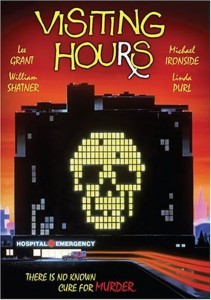 Inaccurate genre labels can leave consumers feeling ripped-off. Visiting Hours was released in the early 1980s using a skull image on its poster. The promotional material implied a slasher film. Yet the film left me feeling dissatisfied.
Inaccurate genre labels can leave consumers feeling ripped-off. Visiting Hours was released in the early 1980s using a skull image on its poster. The promotional material implied a slasher film. Yet the film left me feeling dissatisfied.
Years later, upon analyzing Visiting Hours, I realized that it was not a horror film. No hidden, indestructible psycho racking up a body count. We see the psycho early on: a pathetic weakling who’s no match for the crusading feminist journalist who vows to catch him. Visiting Hours (like I Spit on Your Grave) has more in common with a revenge/crime thriller like Death Wish. That’s fine if you’re in the mood for that. But if you’re in the mood for a horror slasher film, Visiting Hours will disappoint.
Some false advertising is more shameless. Hellcab‘s poster has a supernatural glowing green light emanating from the taxi. The promo line promises horror: “Dare You Pay the Fare?” But there are no supernatural elements. Hellcab is a dreary “slice of life” portrait of a lonely cab driver, based on a stage play. Apparently, the distributor thought this depressing indie flick would sell better if marketed as horror.
Apart from any practical value for the consumer, to understand a genre enhances our appreciation of it. That’s true of any topic. Wine, jazz, First World War aviation. Some people enjoy a subject, others become passionate about it. What we call connoisseurs, aficionados, or hardcore fans. They’ve seen, read, heard, or tasted it all — now they want a deeper understanding.
When you can’t cast your net any wider, because you’re already sampled everything, you go deeper. You reread, re-watch, and re-sample everything. Some horror films I’ve seen over a dozen times, and still, I find new things, discover new concepts and ideas as to why they “work” aesthetically, or as entertainment, or as a historically influential work.
A great film is like a painting or a song. You don’t watch or listen to it only once.
TheoFantastique: Of the various aspects of horror as a genre that you discuss, what do you think is the most definitive?
Thomas Sipos: I don’t just define horror, I explain my reasoning. I want readers to follow my logic, so they can agree or disagree with understanding. I define horror using the Socratic method. I didn’t know this, until an academic journal rejected what became the first chapter of my book. The rejection letter dismissed my “Aristotlean approach,” saying that I was unfamiliar with the “current modes of methodology” in analyzing films.
I guess my approach is Aristotlean. I looked at films widely regarded as horror, and tried to distill the criteria that’s common and necessary among them. Such as?
A horror film should evoke fear. That’s generally accepted. So then, if a film evokes fear, it is always a horror film?
No, because Saving Private Ryan and Death Wish and Titanic evoke fear, yet those are not regarded as horror films. So then, a horror film must have something else in addition to fear. What?
The fear must be evoked by a threat that’s unnatural. An unnatural threat.
TheoFantastique: How is horror understood as a fear of unnatural threat?
Thomas Sipos: I discovered the concept independently, yet it’s not original to me. I’ve since found other writers who’ve said similar things.
In defining the “weirdly horrible tale,” H.P. Lovecraft wrote: “A certain atmosphere of breathless and unexplainable dread of outer, unknown forces must be present; there must be a hint…of that most terrible conception of the human brain — a malign and particular suspension or defeat of the fixed laws of Nature which are our only safeguard against the assaults of chaos and the daemons of unplumbed space.”
Noël Carroll embraced much the same definition in his book, The Philosophy of Horror.
But my favorite phrasing appears in Frank Lupo’s 1987 teleplay for Fox TV’s Werewolf. Rogan, the bounty hunter, observes that a talking flower is terrifying in a world in which flowers do not talk. He scoffs at Alice in Wonderland, because Alice reacts to the talking flower with surprise rather than terror.
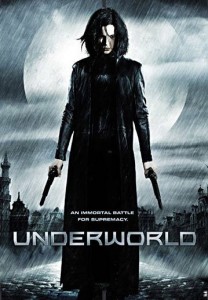 Rogan says: “When the world isn’t the same as our minds believe, then we are in a nightmare.”
Rogan says: “When the world isn’t the same as our minds believe, then we are in a nightmare.”
That defines “horror as an unnatural threat” as well as anything else.
For a threat to be unnatural, the context must be natural. A talking flower is terrifying in our world, but not in the Land of Oz or in Wonderland. Hence, the Wizard of Oz and Alice in Wonderland are fantasies. Underworld is dark fantasy rather than horror, because all the protagonists are vampires or werewolves. Their society is all we see, and that society regards their condition as natural. The unnatural cannot exist in an unnatural context. If everyone is unnatural, nobody is.
Compare these scenarios:
1. You’re at home, alone with a loved one. Just the two of you. Someone you’ve known and loved and trusted for many years. Say, a husband. You’re talking intimately. Suddenly, he pulls a gun on you, snarling, saying he’s hated and lied to you all these years, and now he will kill you.
Horror? No, the threat is natural. Happens every day. It’s shocking and frightening, but the tale could as easily make for a crime thriller, a suspense film, or a soap opera.
2. You’re at home, alone with a loved one. Just the two of you. Someone you’ve known and loved and trusted for many years. Say, a wife. You’re talking intimately. Your wife enters the bathroom, leaving the door ajar. You see her reflected in the mirror, though she doesn’t realize that you see her. As she calls out to you, cheerful and loving, she reaches under her chin and peels off her face, revealing a hideous alien. A bizarre hole in her “face” continues shouting to you, in her lovely voice, cheerful and friendly. Her eye-thing glances into the mirror and sees you watching her…
That’s horror. That’s an unnatural threat. The quality of fear differs. The Ring and The X-Files inspire a qualitatively different fear from the fear evoked by Saving Private Ryan, Death Wish, or Underworld.
Unfortunately, many unnatural threats — such as vampires — have been so overdone, they’ve come to feel natural to horror audiences. Thus, they feel less threatening, and less scary. Jaded audiences are one of the challenges facing horror filmmakers.
An unnatural threat must be both unnatural and a threat. A vampire is unnatural, but the more confident the audience is of the vampire hunter’s eventual victory, the less threatening the vampire becomes.
To have a threat, protagonists must be vulnerable and fallible. This is why horror often works better with no-name actors than with stars. In The Frighteners, we just know that Michael J. Fox will survive and find love in the end. It’s why big studio horror films are often weaker than indie or foreign horror. In the Hong Kong version of The Eye, Mum fails to save anyone at film’s end. Hundreds perish. In the American remake, Sydney saves everyone. The studio couldn’t allow a star like Jessica Alba fail. This is also a reason that Visiting Hours fails as horror. We sense that the slasher has more to fear than does the protagonist, Lee Grant.
TheoFantastique: You identify three subgenres of horror. What are they, are these unique to you as a typology, and can you provide an example of films for each of them?
Thomas Sipos: I divide the unnatural threat into three subcategories. It’s not the only way whereby horror films may be subcategorized, but I think it’s useful for analysis.
First, when the threat is supernatural, which is unnatural by definition. Dracula, The Ring, Final Destination, etc.
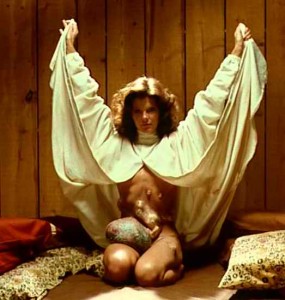 Second, there’s horror/sci-fi, which features the monsters of science and nature. Creatures or diseases or machines with an (often silly) “rational” explanation, yet which remain unnatural (Frankenstein, The Brood), or unnatural to our current understanding of the universe (Alien, X-Files).
Second, there’s horror/sci-fi, which features the monsters of science and nature. Creatures or diseases or machines with an (often silly) “rational” explanation, yet which remain unnatural (Frankenstein, The Brood), or unnatural to our current understanding of the universe (Alien, X-Files).
The Frankenstein monster was “natural” (i.e., not magic), yet still “against the laws of nature.” Hence, unnatural. His remark in Bride of Frankenstein — “We belong dead.” — succinctly summarizes his type of unnatural threat.
The attitude conveyed by his remark is typical of horror. Science fiction seeks to understand. Horror warns against it. This is why The Thing from Another World is horror, not science fiction.
As for the monsters in Alien and The X-Files, they’re often natural, but unnatural to our current understanding of the universe. Upon our encounter with them, “The world is not as our minds believe,” so “we are living in a nightmare.”
Third, there is what I call the uberpsycho. An indestructible, invincible, superhuman force of nature, plodding relentlessly forward. Horror psychos do not run, do not fear. And they are enigmatic. Offscreen or behind a mask. Explaining him, whether through science or the supernatural, weakens his threat.
Halloween was the first slasher horror film. John Carpenter invented the uberpsycho. Myers was human, yet inhuman.
Humanizing a slasher shifts the film into the suspense, thriller, mystery, or crimes genres. The psychos in Maniac and He Knows You’re Alone are weakened by our seeing their faces. Psycho is a great and scary film, but Norman Bates is human, all too human. I’ve tried to justify Psycho as a horror film, but I can’t think of a criterion that, applied consistently, wouldn’t admit all sorts of non-horror films.
The neo-slasher cycle sparked by Scream was not horror. The slasher was running, tripping over his robe. (I think it was in Scream 3). Please. Were I chased by a guy with a knife tripping over his robe, I’d grab something longer than a knife, then chase him and bash in his head. You can’t do that to Myers or Jason. You can do it to suspense psychos, but not to horror psychos.
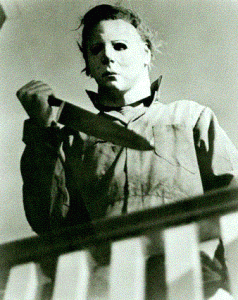 I’ve identified a horror category that I call the apparent uberpsycho. Slashers who appear to be indestructible, largely because they are efficient and enigmatic; hidden offscreen or behind a mask. (Curtains, Night School, House of Death, Splatter University, Girls Nite Out, Hide and Go Shriek, Pieces.) But if a slasher is revealed to us early on as weak, pathetic, and cowardly (Visiting Hours, Don’t Go in the House), then he doesn’t even appear to be an uberpsycho.
I’ve identified a horror category that I call the apparent uberpsycho. Slashers who appear to be indestructible, largely because they are efficient and enigmatic; hidden offscreen or behind a mask. (Curtains, Night School, House of Death, Splatter University, Girls Nite Out, Hide and Go Shriek, Pieces.) But if a slasher is revealed to us early on as weak, pathetic, and cowardly (Visiting Hours, Don’t Go in the House), then he doesn’t even appear to be an uberpsycho.
Finally, I’ve recognized another type of horror, entirely separate from the unnatural threat. Not a horror subgenre, but a second horror genre. I call this the naturalistic psycho gorefest.
Consider The Texas Chainsaw Massacre, House of 1000 Corpses, Mother’s Day, and Saw. Not uberpsychos. They are mortal, vulnerable. They bleed and die. Their faces are usually visible; they are not enigmatic. These films are naturalistic because the threat is natural. But the psychos are, if not unnatural, then at least colorfully bizarre. And there is much gore. The focus is on pain, violence, and gore, rather than on solving the crime.
These films are too abundant to ignore, and while they have no unnatural threats, I can’t see that they’re anything other than horror. Even so, I’m not satisfied with this category or my term for it. I suppose that for the victims “the world is not as their minds believe,” but surely that’s how the soldiers in All Quiet on the Western Front or the prisoners in Penitentiary felt. I’m seeking an all-inclusive definition of horror. One that covers all of horror, while excluding gory or frightening, yet obviously non-horror, films like Saving Private Ryan or Reservoir Dogs.
I Spit on Your Grave doesn’t even qualify as a naturalistic psycho gorefest. The villains were not colorful psychos, but simply mundane, albeit violent, criminals.
Be sure to return to TheoFantastique for Part 2 of this interview with Thomas M. Sipos where we resume the discussion with consideration of the overlap between horror and science fiction and then turn to horror conceptions of the Witch as well as horror and the sacred.





One Response to “Thomas M. Sipos – Horror Film Aesthetics: The Visual Language of Fear (Part 1)”